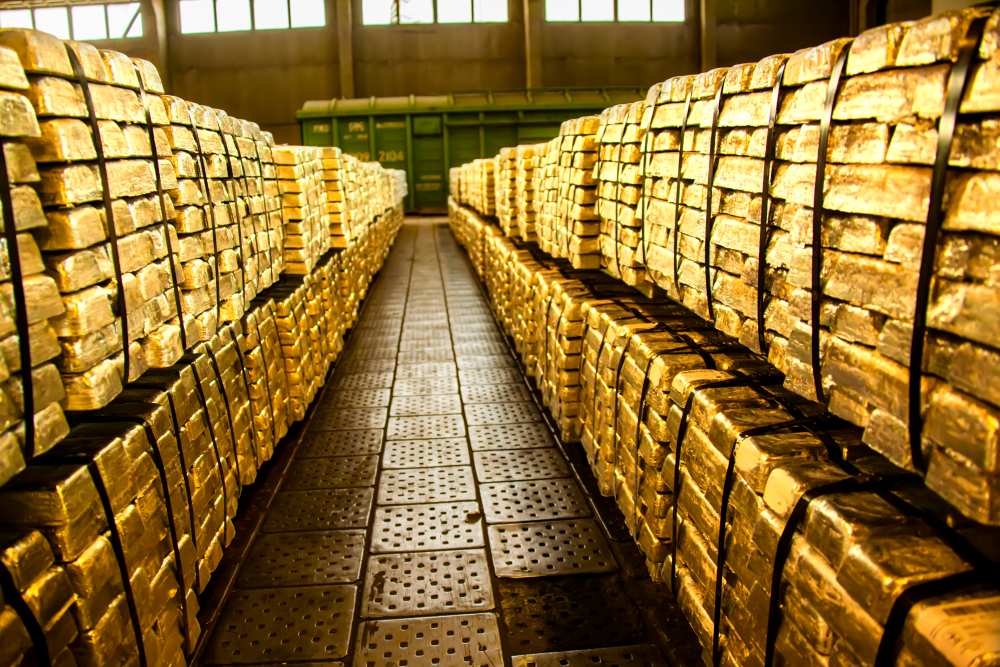The deepest mine in the world is the Mponeng gold mine in South Africa, which plunges 4 kilometers (2.5 miles) below the Earth’s surface. It makes for arguably the weirdest commute on Earth as miners working in the base must take a 90-minute elevator ride to work, kitted out with protective clothing and emergency breathing equipment.
The mine’s shafts are so deep that the planet’s geothermal gradient becomes a problem as the increasing depth is matched by increasing temperatures. The rock temperature can soar to 60°C (140°F) in the bowels of the Earth, well above the heat humans can take. This has inspired humans to get creative with cooling mechanisms that keep the deepest mine in the world at a workable temperature in spite of the planet’s molten core.
A combination of ventilation systems that combined with a refrigeration plant sends cool air through the human-made cave system, as well as ice and cold water slurries, mitigates the worst effects of the high temperatures. However, miners still need to work in shifts to prevent themselves from being exposed to dangerously warm conditions for prolonged periods of time.
Working at this depth also comes with the added complication of possible barotrauma, which was first recognized in French miners in the early 1800s. The bends, or barotrauma, is caused by moving from a place of high pressure to a place of low pressure in a short space of time. For this reason, it’s also known as decompression sickness, and today it most commonly affects divers, aviators, astronauts, and people working in compressed air (such as those involved in the horrifying Byford Dolphin Accident).
Moving from an area of high pressure, like the deepest mine on Earth, to an area of low pressure, like the surface, can produce nitrogen gas bubbles in the body. According to the Centers for Disease Control and Prevention, where this becomes a problem is when that pressure change is made too quickly, releasing the gas into the body. “This can be very painful and sometimes fatal,” they say. However, pressure is more often an issue for people working in compressed air than mines as the many steps taken to control temperature and airflow lessen the stress on miners’ bodies.

Miners have discovered more than just gold in the depths of Mponeng, we’ve even discovered microbes living off radiation.
Image credit: Denis-S / Shutterstock.com
In case you’re wondering how mining at such depths could be worth the hassle, the gold mine is located in the Gauteng province of South Africa where a century of mining has depleted the shallowest and richest deposits, explains Gemma Chilton for Engineers Australia. As a result, humans’ pursuit of precious metals has driven us further underground where we encounter new problems requiring novel scientifically backed solutions.
Ultra-deep mining requires making and maintaining tunnels that can withstand the pressure of the surrounding rock while also resisting collapse. Every day, 2,300 kilograms (5,000 pounds) of explosives are used to clear 6,400 tonnes of rock, says the Guinness World Records. Add to that the occasional earthquake, and you’re up against a lot just keeping the tunnels standing.
Beyond retrieving precious gold from the rock, Mponeng has turned up other surprise discoveries. In 2006, the first known organisms to live independently of the Sun were discovered inside the gold mine. Instead, they rely on radioactivity as a source of energy, and may be an example of how life could survive on other planets.
Diving into the depths of Earth’s rockface is a hazardous and complex operation, but while we’re down there, we might as well find out more about the ground beneath our feet and possibly even the microbes living elsewhere in the galaxy.
Source Link: The Deepest Gold Mine In The World Plunges 4 Kilometers Into The Earth